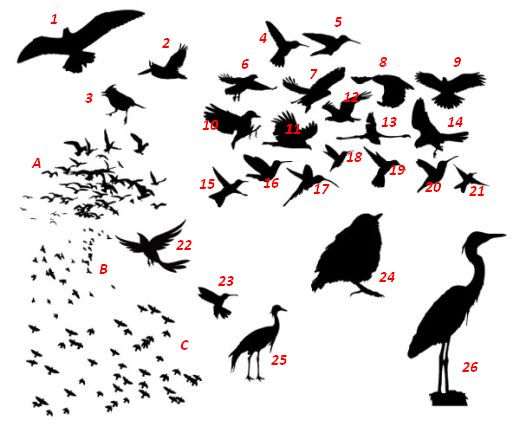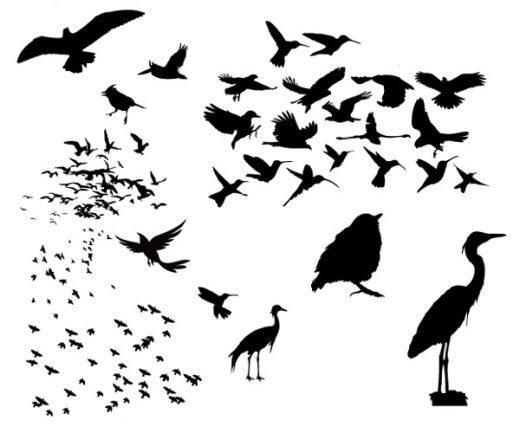All birds have feathers, wings and two legs but they certainly don’t look alike, not even in silhouette.
Birds in the same family can look very different. Take sandpipers (Scolopacidae) for instance:
- Sanderlings are small sandpipers with short legs and a short pointy bill.
- Whimbrels are more than twice the sanderlings’ size with relatively short legs and a long down-curved bill.
- The critically endangered spoon-billed sandpiper is smallest of all with short legs and a spoon-tipped bill.
Why are they so different? Their features have evolved to match their lifestyles.
- Sanderlings chase waves to catch invertebrates tossed on sandy beaches. They need to be quick so it’s important to be close to the ground and able to pick up prey quickly.
- Whimbrels use their long curved bills to probe the mud of salt marshes and tidal flats to find crabs and invertebrates.
- Spoon-billed sandpipers sweep their bills side to side in shallow water to capture prey. Like the roseate spoonbill their lifestyle has shaped their bills.
In architecture, form follows function. In birds their form happened first, then the birds with better features survived.
And now for a Quiz!
Every time I look at the silhouettes, I find myself trying to identify the birds. There are 26 individuals and 3 flocks in the image. How many of the silhouettes can you identify?
Tips: I’ve numbered the individuals and marked the flocks with letters below. Assume each flock is made up of the same species. Some of the 26 individuals are repeats. If you can’t identify the exact species, name the bird by group, as in “gull.”
Post your answers in the comments. Good luck!

(Inspiration for this Tenth Page is from page 10 of Ornithology by Frank B. Gill. Bird silhouettes from Vectorilla.com. Click on the image to see the original)

A. Pigeons
B. Starlings
C. Crows
1. Peregrine
2.
3. Tufted Titmouse
4. Hummingbird
5. Hummingbird
6-9. Raptors
10.
11. Turkey Vulture
12. Eagle ?
13. Crane ?
14. Kestrel or a small raptor
15 – 21. Types of hummingbirds
22.
23. Hummingbird
24. Sparrow ?
25. Heron
26. Great Blue Heron
Here are my wild guesses (made before I read Sharon’s answers). I have no idea what the correct answers are.
A. Gulls or Pigeons
B. Pigeons or Blackbirds
C. Blackbirds
1. Gull (I like Sharon’s idea that it’s a peregrine)
2. Am. Oystercatcher
3. Cardinal (but I like Sharon’s answer that it’s a tufted titmouse)
4. Hummingbird
5. Hummingbird
6. Sparrow
7. Red-tailed Hawk (from an odd angle)
8. Blue Jay
9. Mystery: Has hawk wings and tail but pigeon head
10. Summer Tanager (this is a very wild guess)
11. Turkey Vulture
12. Bald Eagle
13. Flamingo
14. Am. Kestrel
15-21. Hummingbird
22. a cross between a Great-tailed Grackle and a Long-tailed Widowbird
23. Hummingbird
24. European Robin
25. Demoiselle crane
26. Great Blue Heron